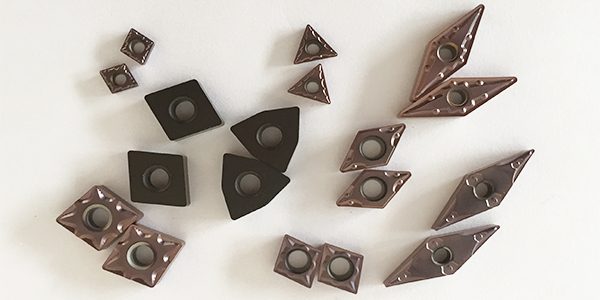How to improve the speed of hardened parts turning and extend the tool life
Processing time is reduced by 70%, cost reduction of 70%, the process is more flexible, shorter delivery times These are hardened parts can bring the obvious advantages of turning, especially for automotive transmission parts manufacturers. But these can only be achieved by using an optimized blade material. So, Sandvik Coromant designed the latest material to improve the anti-crescent wear and chipping ability, faster, better edge line strength.

Automotive transmission parts
Today, hardened parts are widely considered to be a cost-effective alternative to hardened steel parts. Hardened parts turning can greatly improve production efficiency, while reducing machine tool investment costs, energy savings and the amount of coolant. Other benefits include chip removal easier, recyclable chips, and thus high additional benefits.
Hardened parts turning is usually a finished or semi-finished process, the size of high accuracy, strict surface quality requirements. According to the general definition, hardened steel refers to the hardness of 55 HRc and above the material, so the need for hard cutting tools.
Currently known as the world's second hard material cubic boron nitride (CBN), since the last century 80's as a cutting tool material for the first time, has now been widely used. This is mainly because the CBN blade can withstand high cutting temperature and cutting force, can still keep its cutting edge from damage. It has been proven that CBN can extend the tool life and always be consistent, so the machined parts are excellent in surface quality.
Preprocessing is the key
Soft parts (unhardened) must be handled carefully before turning off the hardened parts.
Due to the relatively small cutting depth used in the quenching of the hardened parts, the dimensional tolerances of the soft machining are narrower, which is the key to ensuring the consistency of the process and the key to extending the tool life and improving the quality of the parts. At this point, the use of parts chamfering and rounding characteristics, can be optimized into the knife out, thereby extending the tool life.
Should also consider the clamping of parts. For example, the use of wide claws and parts as close as possible to the spindle bearings, the effect is very obvious. As a general guideline, the workpiece has a recommended diameter ratio of 2: 1 (maximum 4: 1) in the case of only one end of the clip. If there is additional tailstock support, aspect ratio can be increased to 8: 1. For blade clamping, the CoroTurn RC clamping system provides the safety and stability of the CBN blade.
Dry cutting (no use of coolant) is another key advantage for hardened parts turning. CBN blades can withstand cutting temperatures above 1000 ° C (1800 ° F). In general, the use of dry CBN, the tool to extend the useful life, especially intermittent cutting.
Understand the wear mechanism
In order to properly select the blade, first understand the most common wear type associated with the CBN tool - Crescent Depression and back wear. When the surface hardened steel, the main emergence of crescent depression, and crescent depression is mainly between the workpiece and the blade at the point of contact between the extreme high temperature and the force caused. The formation of such wear, can weaken the cutting edge, resulting in tool life is inconsistent.
In the case of lower cutting speeds and larger abrasive materials (such as bearings or tool steels), back wear is more common. The main wear mechanism at this time is abrasion. Severe back wear is not good for surface integrity and dimensional accuracy.
Although the wear is very complex, but there are ways to control, and to maintain the consistency and reliability of processing processes. For example, in order to reduce the impact of the subsequent wear, the cutting speed and the infeed amount should be increased; if the crescent depression is to be reduced, the cutting speed should be reduced and the infeed amount should be increased.
Groove considerations
Obviously, the blade slot and cutting edge processing is extremely important for turning hardened parts because they have a significant impact on tool life and productivity. For example, the standard tool nose radius produces the lowest cutting force, and the stability requirements are also least stringent, and the Sandvik Coromant's wiper and Xcel troughs can improve both production efficiency and surface quality.
The blade tip radius is a very important performance parameter. The small tool nose radius of 0.2-0.4 mm (0.008-0.01 inch) has good chip breaking performance and 0.8-1.2 mm (0.03-0.05 inch) of the large tool nose radius produces better surface quality and thinner chips Reduces the degree of crescent wornness.
Other considerations include selecting the most suitable chamfering and cutting edge conditions. At this point, S-type cutting edge processing is the first choice for hardened parts. It is stronger than the T-type edge, more resistant to broken and chipping, so the tool life longer.
